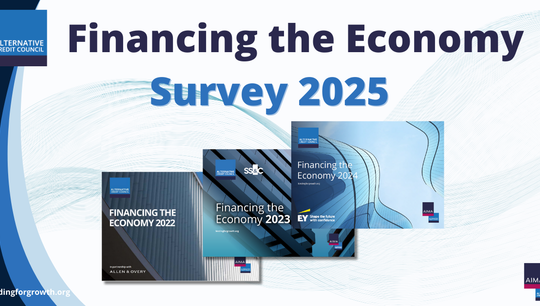Structuring private credit funds and their asset holding vehicles
By Damien Crossley, Head of Tax, Macfarlanes
Published: 14 October 2016
In the closed ended credit space, we see three core strategies:
- Special Opportunities – funds investing in distressed, stressed and/or mispriced situations, typically but not solely via the secondary market.
- Junior Credit – funds investing predominately in junior or specialist debt with varying levels of equity exposure. These funds are typically investing via the primary market. In days gone by, they may have called themselves mezzanine funds.
- Direct Lending - funds investing in senior secured loans principally via the primary markets.
Notwithstanding these variations in strategy, the structural considerations for these types of closed ended credit fund are similar.
Fund vehicle
To date, the general preference for a closed ended credit fund with a UK or US nexus has been a limited partnership. Not only does this vehicle usually lend itself to the commercial terms of the fund, it is generally considered to be the most tax efficient vehicle for tax paying participators (including carried interest holders) and is also what investors expect to see.
The recent carried interest changes in the UK have caused some managers to revisit this question. On the one hand, those changes might reinforce the structuring of direct lending funds as limited partnerships (given that, in order for a direct lending fund to issue carried interest potentially qualifying for capital gains tax to carry holders who are not employees, the fund has to be a limited partnership). On the other hand, corporate and other non-partnership fund vehicles may reduce the impact of the carried interest tax changes in certain circumstances and this has led to alternative vehicles being considered. In most cases, however, we expect the limited partnership to continue to be the vehicle of choice for closed ended credit funds.
Fund jurisdiction
For funds managed or advised out of the UK, the usual choices for limited partnership jurisdictions are (i) England or Scotland; (ii) Luxembourg; (iii) far offshore (for example, Cayman Islands and BVI); and (iv) near offshore (Guernsey and Jersey). Recently, Ireland has revised its limited partnership regime but we have not since this structure used to date. Previously, the choice was principally tax driven, however, now regulatory factors and investor requirements are equally, sometimes more, important.
For example, if the fund manager wishes to benefit from the marketing passport under AIFMD, both the fund and the manager will need to be EU based. Furthermore, many European institutional investors are requiring onshore structures for tax, regulatory and/or reputational reasons.
Another factor on choice of fund jurisdiction for direct lending funds concerns deployment and the development of new direct lending regimes permitting direct lending within jurisdictions such as Germany and Italy where this was previously prohibited or restricted. While these regimes are still developing, they generally require the fund vehicle to be EU based.
The net result of all of this, certainly in the direct lending space, has been an increased desire for EU limited partnership fund structures. Currently, the only two viable regimes are the UK and Luxembourg. However, a UK structure poses a number of potential problems. First, it is less VAT efficient for the fund manager, although this issue will rarely be decisive. Second, investing offshore cash in a UK fund gives rise to a remittance for any UK resident non-domiciled individual investors in the fund. Finally, the Brexit vote has brought into doubt the AIFM position of UK funds and managers for the future.
Accordingly, the Luxembourg limited partnership has become increasingly popular, particularly for direct lending funds. The relatively new unregulated Luxembourg limited partnership vehicles (the SCS and the SCSp) has been particularly popular as they avoid the administrative and regulatory headaches that attach to a regulated fund vehicle. The upcoming RAIF regime in Luxembourg may also prove attractive as it will allow for unregulated limited partnerships with bankruptcy remote cells.
However, for managers who are less concerned with the European institutional investor market and keen to avoid some of the burdens of AIFM, the Cayman Islands remains the most popular jurisdiction as this is familiar to US and Middle East investors. Finally, some managers are putting in place parallel or subsidiary fund vehicles in different jurisdictions to meet conflicting investor and investee country requirements.
Currency sleeves and hedging
Many credit funds will seek to hedge their underlying investments (not made in their functional currency) back to their functional currency. These hedge contracts are usually put in place at the asset holding SPV level (described in further detail below). If investors of a significant size are seeking to invest in currencies other than the principal currency of the fund, managers sometimes set up currency ‘sleeves’ structured as parallel partnerships alongside the main fund which accept commitments in that other currency. These sleeves then hedge the underlying investments back to their functional currency. A frequent issue in these cases is whether these currency sleeves should have their own SPV asset holding structure or whether they can share the structure of the main fund. The latter case avoids the need to split trades between different entities but means it is necessary to trace the economics of the appropriate share of each investment and hedge contract back to the appropriate sleeve via the SPV funding documents. This can be complicated where, as is often the case, there is reinvestment within the SPV and the parallel partnerships’ relative share of investments varies as FX rates fluctuate.
Asset holding SPV structure
If loans were made and held directly by a limited partnership fund vehicle, the fund would suffer interest withholding tax (WHT) on credit investments in countries such as UK and Spain.
It is usual for European focused limited partnership funds to invest via intermediate investment holding structures (SPVs) with the aim that those SPVs be able to access tax treaties and/or domestic exemptions in relation to investee jurisdictions. These SPVs are usually based in Luxembourg but Irish and UK securitisation vehicles can also be used. While most investors in such funds could access similar benefits if they invested in the underlying asset directly, most jurisdictions (even if they treat a limited partnership as transparent) do not grant limited partners treaty benefits at source. While certain jurisdictions would allow a reclaim of tax by such an investor, this is administratively burdensome and often very slow. Therefore, investors in European funds have, until now, required the funds to structure their investments via SPVs to avoid investee country taxation at source. This structuring has been possible due to the fact that European jurisdictions have not sought to deny SPVs used in this context treaty and similar benefits – this is due to the fact that the arrangements are perhaps not perceived as abusive by these jurisdictions and/or because the tax exemptions themselves do not offer an easy basis for denying their effect.
The ongoing OECD BEPS initiative (which includes a treaty abuse limb and could result in SPVs below funds being denied treaty benefits) is causing funds to look again at their SPV structuring with certain investors who would get treaty or sovereign benefits investing directly querying whether this structuring potentially makes them worse off. The issue with responding to BEPS now is that there is not a readily available alternative to Luxembourg (or equivalent jurisdiction) structuring for a pan-credit fund with a diverse investor base. The structuring works now and it may continue to work post-BEPS and so our advice to clients is not to change structure now but to anticipate potential changes in future. It should be noted that many jurisdictions do not charge WHT on interest and so BEPS related changes should not impact structuring of investments into those jurisdictions. Those jurisdictions include Germany (where the loan is not secured on German real estate), France and Netherlands.
A potential outcome of BEPS could be the imposition of US style limitation on benefits provisions to limit the use by funds of SPVs where they have a high proportion of investors from non-qualifying jurisdictions. This could result in an SPV underneath the main fund not being able to access treaty benefits. In that situation, a fund may wish to separate certain investors into different fund vehicles such that a SPV below at least one such fund vehicle (containing qualifying investors) could access treaty benefits.
In anticipation of such developments, many funds are bolstering their AIV (alternative investment vehicle) language in their fund documents to allow a subsequent reorganisation of the fund structure if necessary to respond to BEPS if to do so would be beneficial to investors. This could include pooling investors with good tax attributes separately from those without such qualities to allow for direct investing and/or investing via a SPV which satisfies any post-BEPS restrictions.
Finally, although managers will structure to minimise investee country WHT and SPV tax leakage, the fund documents will have to allocate the cost of any such taxes between investors and the manager. In other words the documents need to specify to what extent underlying tax suffered in the fund is treated as a fund expense and to what extent it is treated as a distribution to investors. This is important because it can affect the size of carried interest payouts. Historically, transparent fund vehicle documents have typically treated tax suffered within or beneath the top holding company as an expense, with withholding tax on the final distribution to the fund and taxes imposed on the fund vehicle being treated as distributed to investors on the basis that investors may be able to get a credit for such taxes. However, more tailored approaches are now being developed which look to whether the SPV structure has worsened the position of each investor compared to if they had invested in the underlying asset directly.











